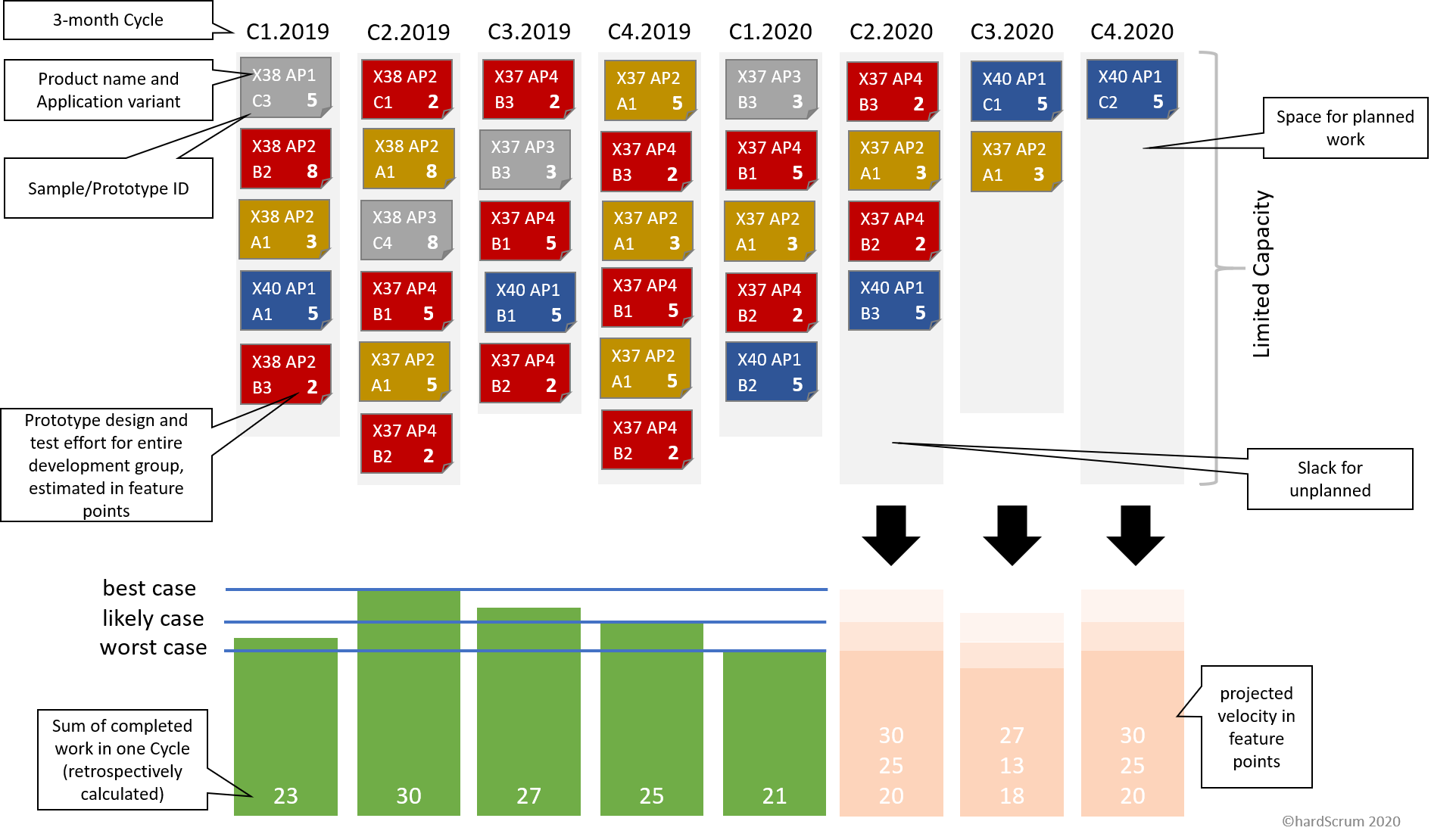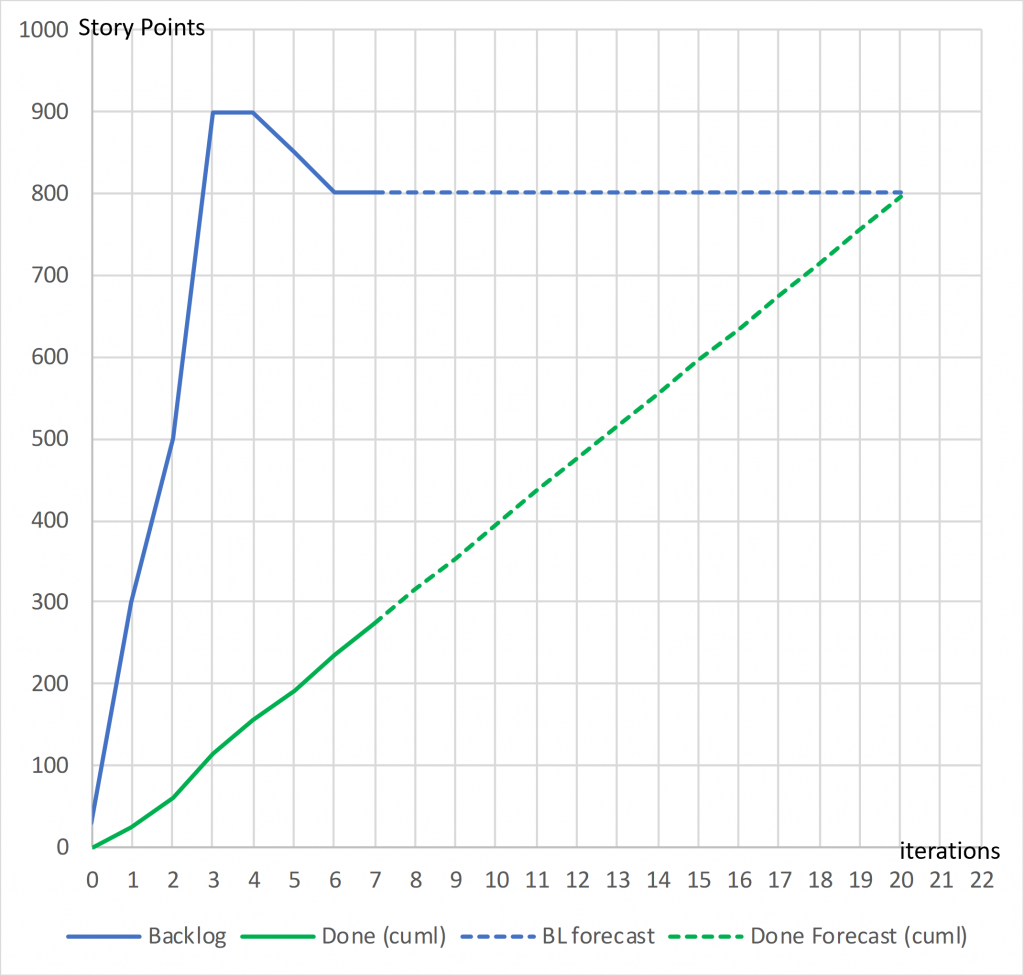"... yes, but here the dates are always predefined!"
From the point of view of those carrying out the work, this is often the case, perhaps simply because nobody knows where the current limits are or because the sales department demands more in order to get at least a little more.
But how do we achieve for the whole organization …
- more adherence to delivery dates and thus more trust of our customers, who come again and again
- at the same time less stress and higher motivation of the employees
- and earn even more money at the same time?
Here is a simple recipe (which admittedly is not as easy to follow):
- Do not blindly accept the customer’s schedules but …
- Better estimations by comparative (relative) estimation of the project done by the implementing teams.
- The clear prioritization leads to more focus and an earlier completion of the highest prioritized projects. We work only as fast as necessary for good quality, but not faster, which in turn leads to less stress and more motivation.
- By retrospectively comparing the estimate with the actual effort, we can determine how much the organization can really achieve (Determining the real capacity of the organization)
- Do not schedule more projects than the real capacity allows. Better even leave some buffer.
An Example
Here is an example view of a development planning at the end of C1.2020. The columns represent three-month “cycles”, the colored cards represent prototypes of different applications in different stages of maturity. The numbers in the lower right corners of the cards represent the effort the development group (cluster) has to invest in creating and testing the prototypes.

Showing cluster or team velocity via a “burn-up chart” is also very helpful when also working towards a larger goal, such as releasing a product version or milestone.

Here, an approximate delivery date is determined by extrapolating the past work rate (aka velocity).
This should be sufficient to achieve a high level of on-time delivery. Now we come to the control of the whole thing and to earning more money.
Earning money with Service Classes
- Introduce service-classes where the customer has to pay more for faster delivery. Internally, the priority of the corresponding project will move up accordingly
- Design the price so that lower service-classes are attractive to customers. (By the way, this can be used to “educate” customers to order early). This leaves enough room in the higher service-classes for urgent and late orders.
If a customer now tries to specify a delivery date, we can offer him options that we can keep.
By the way, the presented procedure also works for internal service teams with internal customers.
The described principles can be realized very well with the P4 framework, management of priorities and service classes through backlogs, comparative estimation through agile estimation, consistent work speed through stable self-organized teams and pull.
Next article: Roles, skills, and role conflicts | Back to FAQ | Home
